March 19, 2019
There was no way to fully prepare for the wettest tropical cyclone on record in the Carolinas.
Hurricane Florence made landfall in September 2018. A Category 1 storm with a 10-foot storm surge, the hurricane battered the coastal Carolinas with torrential rain and 100-mile-per-hour winds. But the biggest transportation and supply challenges for the region proved to come in the aftermath of the storm.
With rising flood levels after total rainfall of 20-30 inches over five days, the city of Wilmington, North Carolina was cut off entirely from the rest of the mainland by floodwaters. Among many other safety considerations, in the aftermath of the storm, power outages, road damage, and weather posed driving hazards, particularly at large intersections. Approximately one million people evacuated the NC coastal areas because of the storm, but a significant number of residents decided to hunker down and ride out the storm. Those that stayed had to deal with widespread power outages for nearly a week following the storm, impacting not only residences, but also a majority of the City’s 221 traffic signals.
By NC Statute, dark signals become four-way stop controlled, but many were poorly visible, resulting in compliance and safety concerns. Further, intersections on larger 6 or 8-lane arterials are not well set up to become four-way stops. Without a law enforcement officer there, compliance was spotty and multiple severe crashes occurred. With an officer there, the weather and traffic had safety implications – and officers needed to be freed up for other critical duties.
Collaboration and quick thinking led to a solution that applied the rules of traffic engineering to organize flow of traffic and increase safety with minimal staffing resources.
What is round and moves in a counter-clockwise direction?
As it turns out, hurricanes share some characteristics with one of the safest intersection forms. It was the idea of Officer Eric Lippert, Wilmington Police Department (WPD) Traffic Enforcement Unit, to direct traffic with temporary roundabouts. Making it happen was a group effort. WPD provided cones for the initial configuration, and the Wilmington Department of Traffic Engineering, under the helm of City Traffic Engineer Don Bennett, PE, later added signs and recommended geometric configurations to the designs.
The group created the design at multiple intersections, each time learning a bit more. Following the storm, Kittelson helped analyze each iteration of the process through video footage review. Here are some of the City’s and Mr. Bennett’s lessons learned from the temporary roundabouts in Wilmington in September 2018:
Version 1: College at Oleander
 As one of the busiest intersections in the City, College and Oleander was a natural first candidate, providing sufficient space to set up the roundabout. The design resulted in safe and self-regulation traffic flow, freeing up officer resources.
As one of the busiest intersections in the City, College and Oleander was a natural first candidate, providing sufficient space to set up the roundabout. The design resulted in safe and self-regulation traffic flow, freeing up officer resources.
Lessons Learned from V1:
- Increase tapers to better align traffic entering the roundabout.
- Bring in light towers for night operations (traffic still out despite curfew).
- Create a trailer with all materials needed and a “playbook” of major intersections with basic layout as needed to implement for any event where signals will be out for an extended time frame.
- Patrol car should be equipped with four corner blue lights on light bar for visibility from all approaches.
Here is V1 in action. Thanks to Wrightsville Beach Fire and Rescue for your service and for the foresight to collect this invaluable drone footage!

Version 2: Market (US17) at Eastwood Road/Martin Luther King Parkway (US74)
At one point in the aftermath of the storm, US17 was the only available emergency route into Wilmington with stretches of Interstate I-40, US74, and US421 under water from floodwater run-off. As one of the northern gateway intersections into Wilmington, safe and efficient traffic flow was critically important.
Lessons Learned from V2:
- Circulating roadway needs to be wide enough to accommodate trucks.
- Cones make for a ready truck apron if the above is not met. Windmaster sign stands do not like being run over.
- Entry lanes require flare.
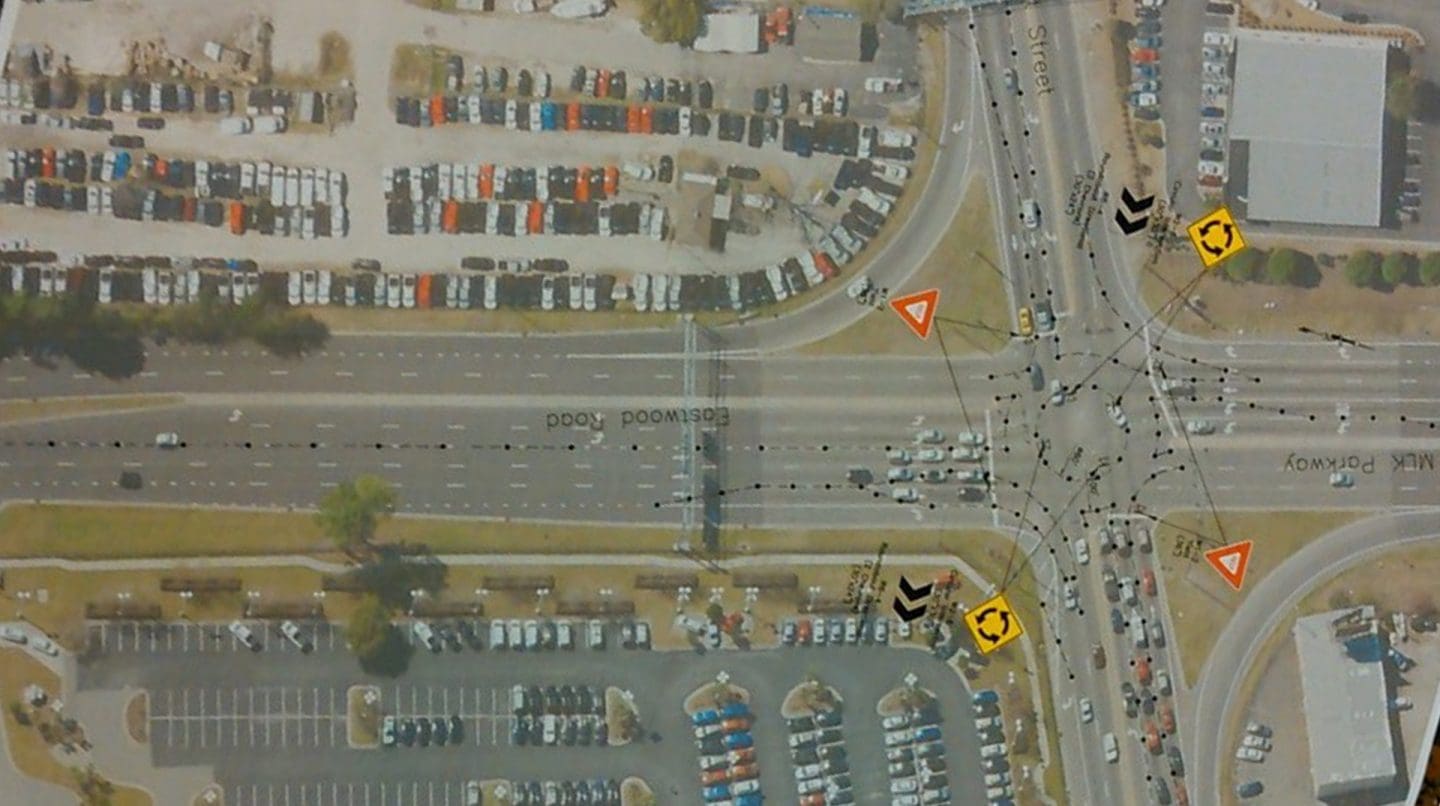
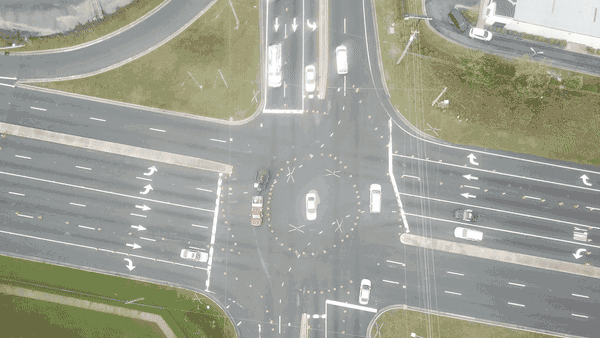
Version 3: 17th at Shipyard
This is another major intersection within the City and important for traffic to access New Hanover County Regional Hospital, the largest medical facility in the area. The roundabout assured safe intersection operations, and continued access for emergency vehicles.
Lessons Learned from V3:
- Extend tapers to beginning of left turn bays. This reduces the number of lanes to close.
- Install reverse curve on entry. This sets up a tangent approach to the center circle.
- When using slip right lanes, extend exiting left cone line to direct to the right-hand departing lane, and force the roundabout exit to inside departing lane.
- Roundabouts self-preempt, providing continued service for emergency vehicles even without signal control.
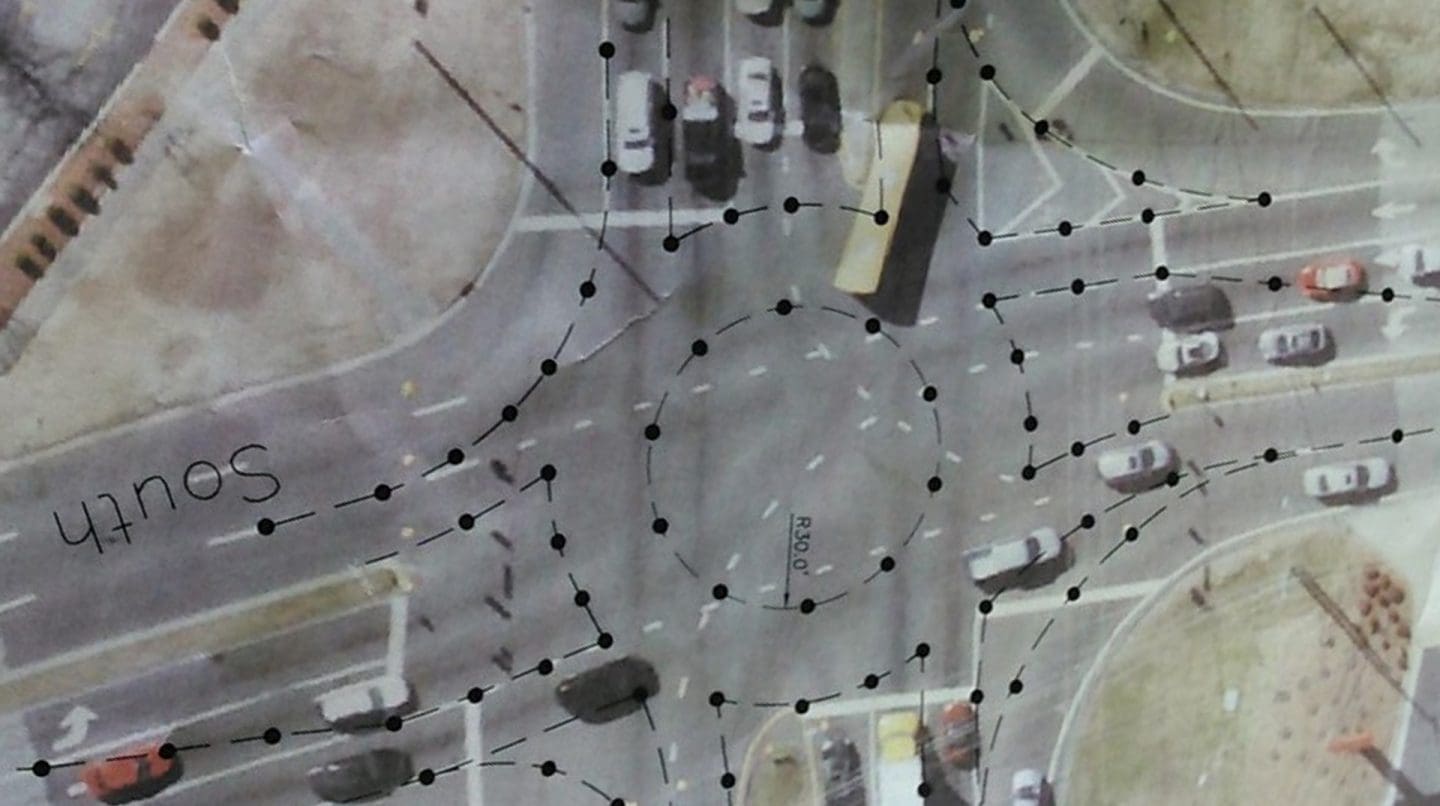
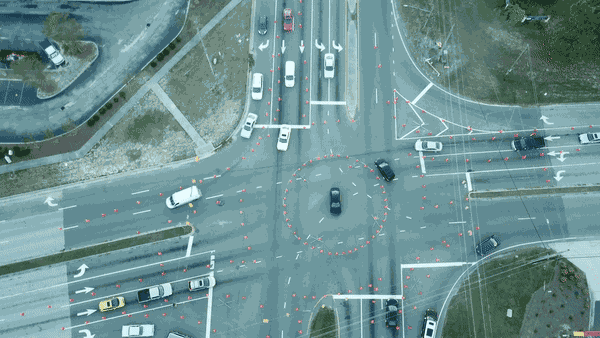
In addition to these first three roundabouts, the group also constructed a fourth outside of Wilmington at the request of the State Highway Patrol after a severe crash, incorporating all lessons learned thus far.
Capacity Observations
Kittelson assisted the City of Wilmington after the storm in evaluating capacity and operational performance of the temporary roundabouts. Based on several 1-2 minute drone video clips, our team evaluated entry capacity of the temporary roundabouts and compared them to that of a permanent single-lane roundabout. Our findings showed that for the observed conditions, capacity of the temporary roundabouts varied across locations but was lower than guidance in the Highway Capacity Manual developed through prior Kittelson research for FHWA.
The reduced capacity is explained by a few patterns we picked up related to driver behavior. Reverse yield behavior – in which circulating cars yield to entry cars – occurred regularly. We also noticed that some drivers stopped at the painted stop line then yielded to the entry into the roundabout, while some drivers stopped at the entry to the roundabout even when there were no other cars. Overall, it was apparent that drivers were cautious in approaching this unusual intersection configuration. While this lowered capacity relative to a permanent roundabout, it also resulted in a safe environment. Over the several days the roundabouts were in place, no severe crashes were observed at any of the locations.
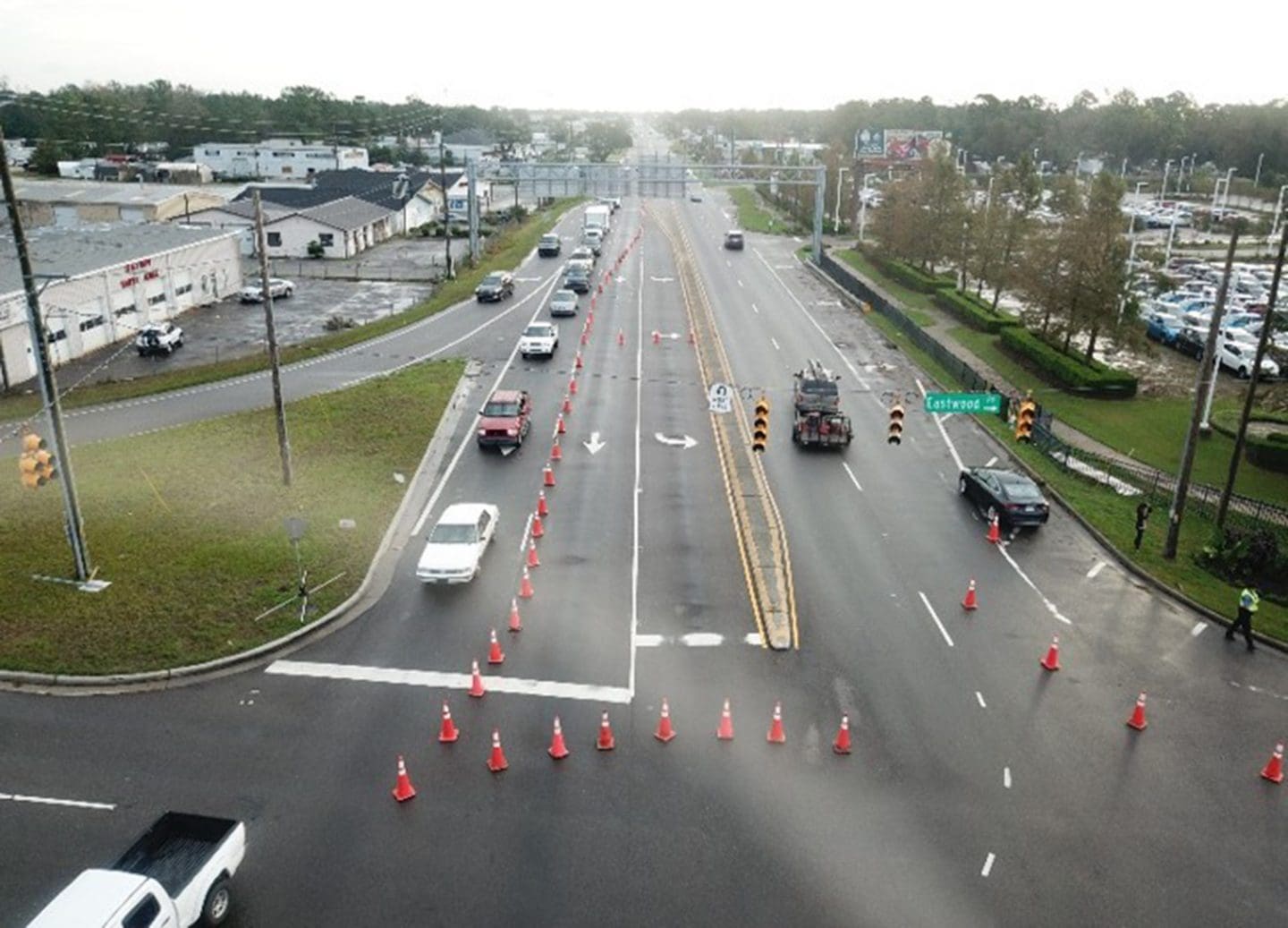
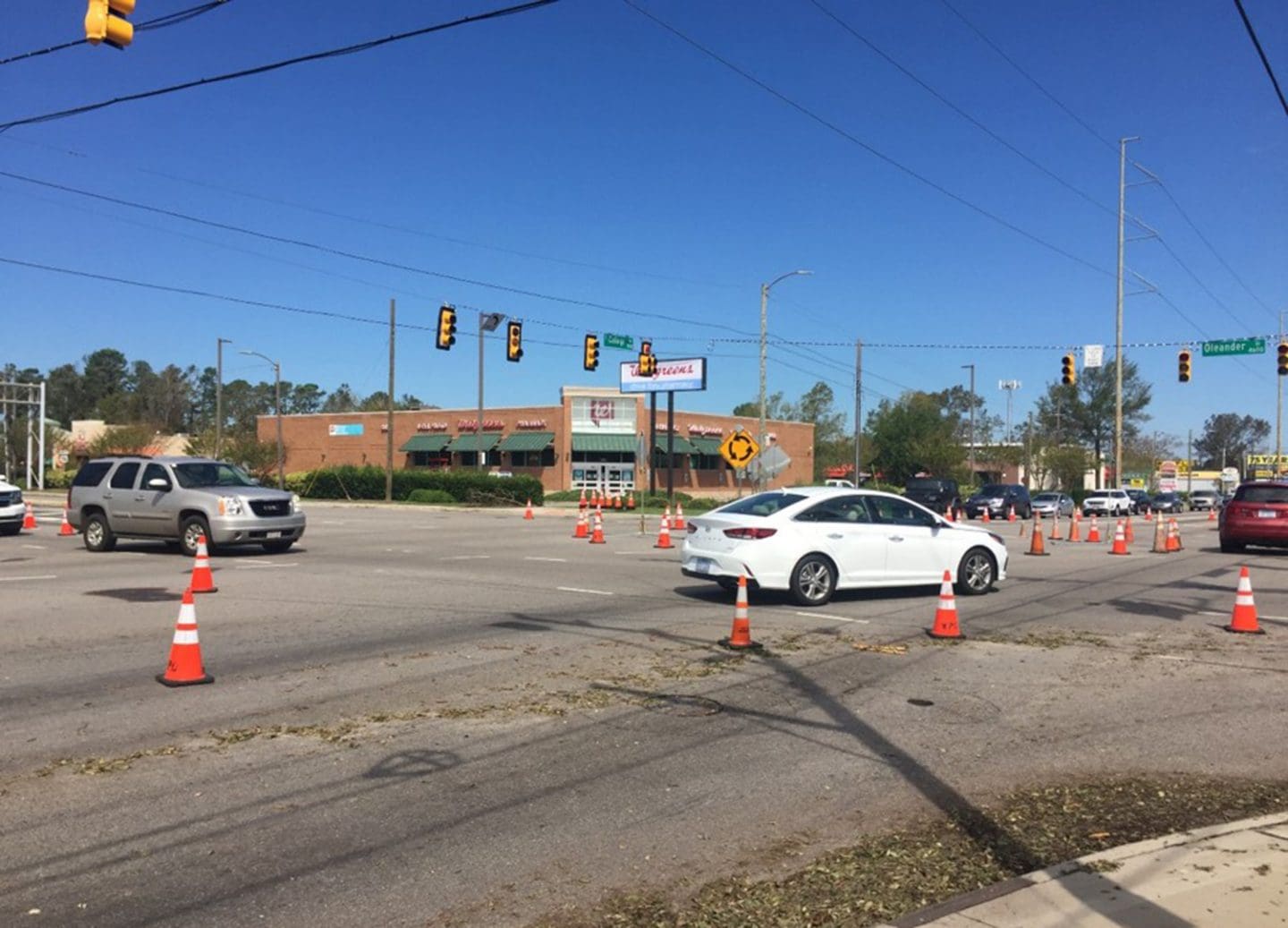
In Summary: It Takes a Team
Kittelson was inspired by the efforts of the City of Wilmington Police Department, City of Wilmington Traffic Engineering Department, Wilmington Streets Division of Public Services, Phoenix Spirit Group, and NCDOT to bring organization to Wilmington’s busiest intersections in the aftermath of the hurricane, and the fact that no collisions were reported during this roundabout control.
Along with Don Bennett of the City of Wilmington, I presented this topic during the session “Bending the Learning Curve: Local Agencies Adapting Their Roundabout Implementation Based on Experience” at the 2019 TRB Annual Meeting, sponsored by the TRB’s Standing Committee on Roundabouts. We were thankful for the chance to share the experience and lessons learned, in the hopes this helps other communities in the future. If you have questions or would like to discuss, please reach out to me for more information!
Supplies Needed for Temporary Roundabouts
- 300 cones
- 8 sign stands
- 4 roundabout signs
- 4 chevrons
- 4 yield signs
- 30′ of rope
- 1 can of marking paint in a marking stick
- Inherent knowledge of the general geometric configuration of a roundabout
All Images and drone footage courtesy Wrightsville Beach Fire and Rescue.
